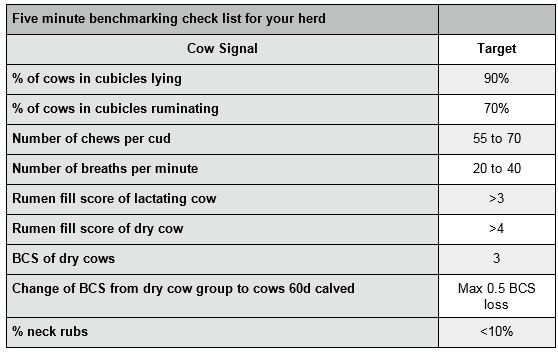



Signals at the Feed Trough: Improving Efficiency on Your Dairy
Read what cows are telling you through body language and behaviour - this is the key to getting the most from cattle feed.Take a step back and watch you cows, recommends Tom Hough at Mole Valley Farmers' head of nutrition and technical service.
“Feed efficiency is crucial all the time, but low milk price really focuses the mind,” he said. “Dry matter intake is essential for cow performance and profitability, yet one of the most common issues I see are neck rubs caused by incorrectly positioned neck rails at the trough. Why are we making it harder for a cow to achieve dry matter intakes?”
Speaking at a recent cow signals day organised by Duchy College in collaboration with Mole Valley Farmers for Duchy students studying Level 2, 3 or 4 agricultural apprenticeship courses, Mr Hough said if more than 10 per cent of the herd had neck rubs, then attention should be turned to the feed trough.
“Research carried out on a Norwegian beef finishing unit found improving neck rail position boosted growth rates by 200g a day, which suggests dairy producers could see a notable improvement in performance by doing the same,” he said at the Duchy College farm in Stoke Climsland.
Mr Hough explained that the ultimate aim was to present cows with a palatable, consistent, well balanced ration. This would ensure the rumen worked at its optimum to get the most out of the diet.
To monitor intakes and how well the ration was working, Mr Hough advised apprentices carry out a five minute cow signals check list on their employer’s farms (see table). This should include looking at the incidence of neck rubs.
“If it’s over 10 per cent, the first thing you can do is push up feed more regularly so she doesn’t have to stretch for it - 10-12 push ups a day would be ideal, aiming for a minimum of six,” he said.
Rumen fill was also a useful, instant indicator of dry matter intakes. This should be assessed by standing on the left side of the cow and looking at the triangle of skin as it drops off the short ribs. Ideally the skin should go down three finger’s width and then out again. If there is poor rumen fill, questions should be asked why - is it feed presentation or feed space for example?
“Body condition is also a useful indicator of how well the ration is working. If cows are too fat at drying off it is too late to correct and suggests feeding was wrong in late lactation,” said Mr Hough.
These fat cows indicate over supply of costly feed in late lactation. They will also be more prone to lower intakes at calving and be more likely to develop metabolic problems.
In the current milk price environment Mr Hough said those farms feeding one ration and struggling with over fat cows at drying off or late lactation could benefit from targeted feeding by splitting groups or feeding to yield in the parlour. Farmers should also aim to condition score 2-3 months before calving to provide enough time to address problems and pull back feeding or give more.
Duchy College’s Roger Clarke said measuring and assessing cow signals around the feed trough was a crucial tool in maximising farm efficiencies.
“It’s important for both future and current farmers to look at their farm system from a cow’s perspective. A happier cow is a more profitable cow, creating a sustainable future” he said.



